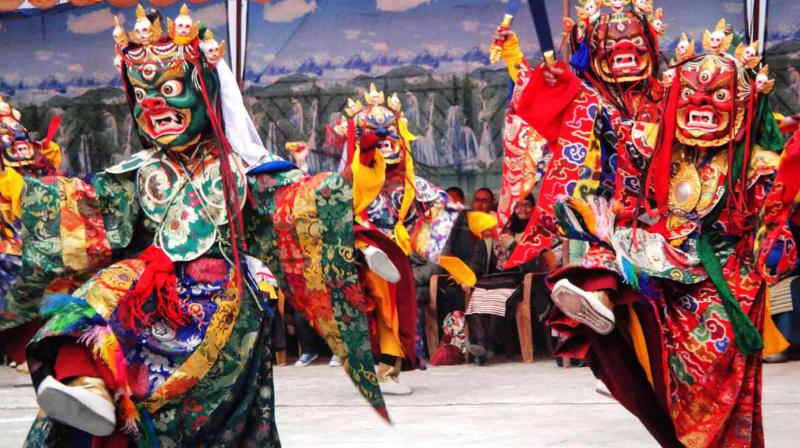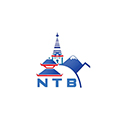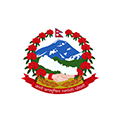Festivals in Nepal

A number of festivals are celebrated in Nepal during the year which has some purpose on spiritual values. Festivals are the means to unite people in Nepal. Thus Festivals serves the best means to recognized and appreciate the Nepalese way of life. No matter in which season you visit Nepal you will have opportunity to enjoy festival.
The following festivals listed under different months indicate how often Nepalese celebrate their festivals.
Maghe Sankranti (January):
Maghe Sankranti is a festival to celebrate the waning of winter. Early in the morning, worshippers go to the Ghat (bathing area of holi Rivers) and clean themselves. They take flowers, red and allow vermilion power and laddus, special sweets of sesame seeds and give them to local deities and important God like Vishnu the Preserver and Shiva the Destroyer. Those who do not take their morning baths on this day, legends say, will be re-born as goats. After visiting the river side and Shrines, the family gets together and enjoys special feasts of Chaku Sugarcane paste, yam and ghee butter.
Sweta Machhendranath (January)
Sweta (white) Machhendranath enjoys a week-long festival in which he is bathed, oiled, perfumed, and painted. The Goddess Kumari visits him at his elaborate temple near Asan . If he is pleased by the music, offerings, and attentions of his devotees, the people of the Valley can look forward to satisfactory rainfall in the planting season.
Swasthani Puja(January - February)
She is the ultimate gift grantor; if insulted, she can make life miserable. By worshipping Swasthani, Parbati attained Lord Shiva as her husband. In the worship rites of Goddess Swasthani, outlined by Parbati, the Swasthani scripture is read every evening for a month. Worshipping Swasthani will bring together parted relations, remove curses, and result in limitless gifts.
Shri Panchami (February)
This day is dedicated to Saraswati, the Hindu goddess of wisdom. On this day there is a gathering at her shrine at Swyambhu,SaraswotiKhel,Pashupatinath and at Kathmandu Durbar Square Students believe that a visit to the goddess’s shrine on this day will ensure that their examination are good and whatever they study will be easy to remember. Musicians take their instruments and artisans take their tools to the feet of the goddess so they, too, can receive her blessings. This is the first day of spring. The day is also considered on of the best in the year on to get wedded.
Maha Shivaratri (February):
This is the greatest festivals of Hindus in the honor of Lord Shiva the God of Regenerations. A great religious fair takes place in the Pashupatinath Temple and thousands of people from all over Nepal and India flock the temple to worship Lord Shiva. Many pilgrims and worshipers spend whole night lighting sacred fires, singing praises of Lord Shiva and keeping vigil to welcome the descent of the deity. Early next morning, the faithful take a sacred dip in the Bagmati River to purify their bodies and souls. Then they fetch holy water in their cupped palms to offer it to the phallic symbol of Lord Shiva enshrined in the innermost sanctum of the temple. People visit the temple throughout the day with offering of rice, vermilion, fruits, flowers and coins.
Lhosar (February):
Sherpas and Tibetans welcome their New Year with feasts, family visits and dancing. Families put on their finest clothes and jewelers and exchange gifts.
Buddhist monks offer prayers for good health and prosperity, and perform dances at the monasteries. Colorful prayer flags decorate streets and rooftops; the colors seem especially brilliant at the Buddha and Swayambhu stupas. Crowds of celebrants at Bouddha bring in the New Year by throwing tsampa (roasted barley flour) into the air.
Holi (March):
It is the national festival which has its origins in the religious cultural traditions of Hindu religion, It is celebrated throwing colored water at each other in remembrance of happy demise of wicked demines holika. In Kathmandu, ceremonial pole decorated with strips of colored cloth is raised in front of the Kumari Chwok at Durbar Square to announce the beginning of festival. On the full-moon day the, last day of the festival people can be seen roaming the city, petting water filled balloons and throwing colored powder to the peoples. The ceremonial pole is pulled down to finish the festival.
Chaitra Dasain (March-April):
Chaitra Dashain is also called a small dashain in contrast to October's big Dashain. This festival is similar in many respects and many goats and buffaloes are sacrificed to the goddess durga at the ‘kot square'. Red vermillion powder, family blessings, and goat and duck sacrifices are essential to praise the victory of Ram, hero of the epic Ramayana, over the evil king Rawan. Mother Goddess Durga, the source of all power, must be supplicated too for her powers that helped Ram achieve his victory.
Ghode Jatra (April):
Visitors are often amazed by the fine horses of the Nepalese army, and Ghode Jatra is a time for the most graceful of these animals to perform before the public eye. Legends relate that this "horse festival" was begun after the Kathmandu people buried a demon under the soil of Tundikhel showground. They say that he may rise again and cause worry to the world if he is not trampled on by horses each year. So every spring, this victory over evil is celebrated in the Valley by organizing palanquin processions and grand display of show jumping, motorcycling feats, and gymnastics.
Bisket Jatra (April):
During this important festival, the old kingdom of Bhaktapur and its neighboring areas replay a drama passed on over the centuries. At Bode village, there is a tongue-boring ceremony in which the dedicated may reserve a place in heaven. A wooden pillar is erected in the evening on the first day of this festival. On the second day which is also the first day of Nepali New Year, a chariot is pulled from the pillar to the temple of Bhairavnath in the same square as the five-storey Nyatapolo pagoda. The pillar is shaken violently in the evening and then lowered with the great rejoicing. The chariots of Ganesh, goddess Mahakali and goddess MahaLaxmi are carried on the shoulders of the devotees.
New Year's Day (Nava Barsha) (April):
The Bikram Era is Nepal’s official calendar. This solar calendar was started by King Bikramditya. The New Year 2057 of the Bikram Era corresponds to 2000-2001 of the Christan Era. New Year's Day is an official holiday. Devotees visit the Pashupati temple to take a dip in the holy Bagmati river.Pilgrims also visit other religious spots and spend the day at picnic spot. It is a day to seek blessings from family priest and one's elders as well.
Rato Macchindranath Jatra (May):]
The festival of Red Macchindranath takes place in Patan over a period of two months and is one of the complex festivals. A chariot bearing the image of Macchindranath, valued by both Hindus and Buddhists moves in a series of daily stages through the streets of patan during this festival. Patan's streets and palace complex are made even more evocative by wavering lamp and candle lights; women busy cooking feasts, and men gathering strength to pull the chariot of their red deity. As Lord Machhindranath views his followers from the high seat of his chariot, its four wheels - representing the powerful Bhairab - receive rice and vermilion powder, the king of serpents is asked for blessings, and his jeweled vest is shown to the public.
Buddha Jayanti (May):
Nepal is birth place of Buddha. This festival is celebrated to mark the birth day of Lord Buddha. On May 6, a full moon day, the Lord's birth, enlightenment, and salvation are applauded throughout the valley with celebrations. Swayambhu and Boudhanath Stupas are prepared for the oncoming festivities several days in advance. Monasteries are cleaned, statues are polished, bright prayer flags waft in the breeze, and monks prepare to dance. On the Jayanti day, people reach the Stupas before dawn, go around them and give offerings to the many Buddha images there. Also, pilgrims take a long journey to the birth place of Buddha that is Lumbini on this day. Lumbini is situated at the western part of Nepal.
Krishnastami (July-August):
It marks the birthday of Lord Krishna, one of the incarnations of Lord Vishnu. The best place to watch the celebrations of Krishna’s birthday is at the Krishna temple at Patan and Changu Narayan. Sacred devotional music is played all night. Go early in the evening.
Janai Purnima and Raksha Bandhan (August):
All high caste Hindus wear a sacred thread over their left shoulder and tied under their right armpit. On this day, each year the sacred thread is replaced after a day long fast. And also the priest put sacred janai or holy thread around the wrist of Hindu people. On this day, especially Newar people prepare special dish on their homes. That dish is known as 'Kwanti'. Kwanti is prepared with nine different types of beans. Kumbheswore temple in Patan and holy Lake of Gosaikunda are important places for this festival where people take holy dips.
Naag Panchami (August):
Images of the serpent 'Naga' are stuck over the doors of house during the festivals of snakes. Since snakes are believed to have power over the monsoon rainfall, it is important that they are appeased. Their image also keeps evil from entering the home.
Gai Jatra (August):
Satire, jokes, fancy costumes, and colorful processions are the order of the day as people recall how an eighteenth century king rallied his people to cheer his queen upon the death of their son. Those who have experienced the death of close ones during the past year share their sorrow and fake comfort in the fact that the Gai (Cow) has safely transported the departed souls on their after life journey.
Young men wearing women's saris, children `dressed up as cows and whimsical characters of all sorts fill the streets. Special issues of local magazines poke fun at everyone and everything - even the most important people aren't spared.
Teej (September):
This is a special festival for women and all married women are supposed to fast all day bathe in the holy rivers, lakes. The entrance to Pashupatinath is a good place to watch as crowds of women, dressed in brightly colored saris with red marks on their foreheads, come down to river. This unique women's festival is marked by fasting, folk songs, and dancing as the women recall Parbati's devotion to her husband Shiva. Married women visit their fathers' homes. It's a loud and cheerful celebration until late at night, when strict fasting discontinues. It is believed that their married life will be long and happy and they will not lose their husbands if they celebrate this festival. Unmarried women who fast on this day will have good luck in finding suitable husband. The blessings of Shiva and Parbati ensure that family life will be joyous for all.
Indra Jatra (September):
The Indra festival is celebrated in honour of the ancient Aryan God Indra, King of heaven and controller of the rains. The living goddess Kumari is taken in procession through the streets of Kathmandu and the king receives blessings from her. For eight days, Kathmandu’s Durbar Square is the focus of a great celebration fit to "flatter the King of Heaven". Indra's dhwaj or flag is erected on the first day. It is said that many centuries ago, Indra's mother needed specially scented flowers but could not find them in heaven's gardens. Indra discovered parijat flowers in the Kathmandu Valley and tried to steal them for his mother. He was caught and imprisoned by the Valley people. When Indra's mother came searching for him the people were appalled by what they had done. They released Indra and dedicated one of the most colorful festivals of Nepal to him to appease his anger. Masks and statues representing Vishnu, Bhairab, and Shiva are shown to the public and the Goddess Kumari witnesses the special occasion from her chariot. Indra is thanked for the rains and assured once again that he is respected in the Kathmandu Valley.
Dashain (October)
This is the biggest and the longest festival in Nepal and lasts 15 days in all although the main festivities are concentrated in nine days during which all schools and government offices are closed. The skies of Kathmandu are filled with kites and the marketplaces are filled with farmers bringing their buffaloes, goats and chicken to sell. The first day is Ghatasthapana. On the seventh day called "Fullpati. On the ninth day, goats and buffaloes are sacrificed around noon in the courtyard called 'Kot' behind Durbar Square and a stream of blood flows. Similar sacrifices are made in the temples of goddesses through the country to celebrate her victory over evil. The tenth day, Bijaya Dashami is the highlight of the festival and all Hindus and many Buddhists go to the relatives and elders in order to receive a ‘Tika', which is rice immersed in a curd with red pigment color placed on their forehead. In the following days of Dasain, families and friends unite, feasts are consumed, blessings are imparted and gifts are exchanged. Nepal’s most beloved festival ends with the full moon. Dashain is not only the biggest festival but a happy one because the weather is perfect.
Tihar (Oct.)
The third and fifth days are the most important of this five-day festival. In western India it is the biggest Hindu festival and in Nepal it is second only to Dasain. On the first day crows, the messengers of death, are honoured and fed. The second day is in honour of dogs, the guardians of the dead and the mount of Bhairab. The third day is set aside for cows as the incarnation of Laxmi.The goddess of wealth. This day is called Deepavali, the festival of lights, and all the households of Kathmandu are illuminated by lamps to the Goddess of Wealth. This festival always falls on a new moon so the effect is particularly delightful. It is said that the Goddess Laxmi will shun any household not illuminated on this day, which is also an occasion for gambling. The fourth day is also a new year for Newars. In this day people worship their own body or soul. And families get together to celebrate this occasion. The fifth day of the festival is Bhai Tika and is meant especially for brothers and sisters who are supposed to get together on this day. On this day sisters place tikas on their brother’s forehead to protect them from evil. And sisters also bless them for longer life. In return, brothers make generous gifts to their sisters.
Bala Chaturdasi (December):
This simple, festive day takes place in the entire nation’s temple. Families who have lost a loved one in the last year keep an all night vigil in the forest, lighting oil lamps and singing songs. Following a ritual morning bath, people walk through the forest, scattering seven types of grain along the paths and over the linga of Lord Shiva to give merit to their late kinsmen and to cleanse the sins of a mythological man called Bala who had been transformed into a demon.
Bibah Panchami (December):
Every year the idols of Ram and Sita are brought out in procession and their Hindu wedding ceremony is re-enacted during a week-long religious fair. Bibah Panchami reflects the devotion of Hindus to Ram, perhaps the most popular among the incarnations of Vishnu, and to Sita, the model of the ideal Hindu woman.
AIl the people of the Hindu world know the story of the marriage of their hero Ram and the princess Sita, as told in the epic Ramayana. King Janak, Sita's father, proposed a test of strength for the suitors of his daughter: to string the great bow of Lord Shiva. Warriors, kings and chieftains came from afar, but no man could even lift the bow. Ram lifted the bow with ease and when he tried to string it, the bow shattered into pieces. Ram and Sita were married in Janakpur, now in southern Nepal, and their marriage is celebrated to this day.
 Actual Adventure Pvt. Ltd.
Actual Adventure Pvt. Ltd. Actual Adventure Pvt. Ltd.
Actual Adventure Pvt. Ltd. 











